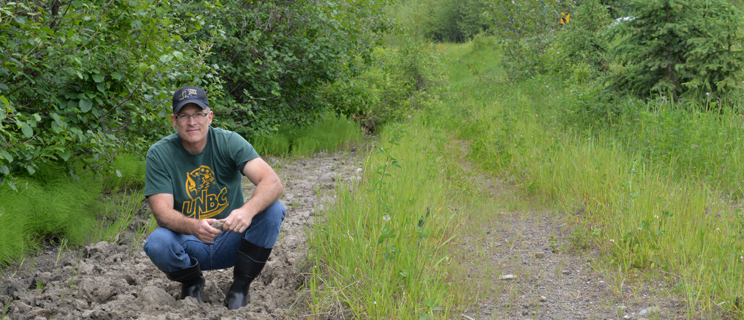UNBC Research Identifies Moose-Vehicle Collision Hotspots
Prince George, BC – Collisions between moose and vehicles can be deadly, but identifying hotspots along the highway can help reduce the risk to humans and ungulates alike.
Newly published research by UNBC Senior Laboratory Instructor Roy Rea sheds light on why some areas along Northern BC highways are at a higher risk for collisions between humans and moose and what can be done to make the roadways safer. Rea’s article, Characterizing Moose–Vehicle Collision Hotspots in Northern British Columbia, will be published in the upcoming issue of the Journal of Fish and Wildlife Management. It is currently available online at http://fwspubs.org/doi/pdf/10.3996/062013-JFWM-042.

Senior Laboratory Instructor Roy Rea.Download High Resolution Image.
The article relies on Wildlife Accident Reporting System data collected between 2000 and 2005. Rea identified 29 moose-vehicle collision hotspots and then studied the environmental and infrastructure attributes of each location to determine common characteristics. He found that roads that went through black spruce forest and were further away from bodies of water were at a higher risk for collisions.
Among the recommendations in the article is updating moose warning signs on the highway so that they correspond with current high-risk areas.
“A sign may have gone up 30 years ago where there used to be a hot spot, but now the mountain pine beetle has gone through, wiped out all the trees, and it’s farmland and not a moose collision hot spot anymore,” Rea said. “Signs need to be timely, current, and reflect the actual collision data.”
Nine of the hotspots Rea identified were linked to places where road salt accumulates in roadside ditches, forming roadside mineral licks. As a result of the initial study, Rea is now working with the provincial Ministry of Transportation to further examine how often moose, deer and other wildlife visit roadside licks and what can be done to make the licks less attractive to animals.
-30-